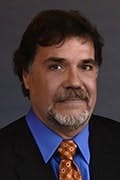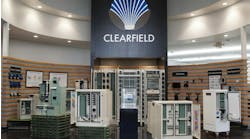Peter Asmus, Navigant Research
Peter Asmus, of Navigant Research, describes a Vermont company’s remaking of its microgrid technology play with roots that go back to 2002.
Founded in 1974, Northern Power Systems (NPS) of Barre, Vermont, is returning to its microgrid roots, strengthening its market-leading position as the wind turbine of choice for microgrids with recent partnership arrangements on systems controls and energy storage integration.
NPS designs, manufactures, and sells 60 kW and 100 kW wind turbines globally, a scale that appears to be ideally suited to microgrids, which often integrate other diverse generation sources ranging from traditional diesel generators to solar PV. The company went public in April 2014 on the Toronto Stock Exchange. Since NPS has deployed over 500 of its wind turbines in the field, it is the market leader today in remote microgrids such as those deployed in Alaska.
Though the company launched a PowerRouter microgrid testbed in 2002 and was involved with the pioneering concept of droop frequency that fell under the umbrella of the Consortium for Electric Reliability Technology (CERTS), it steered away from microgrids when its parent corporation Distributed Energy Systems declared bankruptcy in 2008. A newly independent NPS returned to the market that year with fresh investors and a focus on its wind turbine product line. It is now refocusing on microgrids as a business opportunity and offering its next-generation bidirectional FlexPhase power converters for a variety of microgrid and other energy storage applications.
With sophisticated controls provided via its power conversion technology (PCS), which helps relieve stress on the microgrid, NPS’s small wind turbines are ideally suited for remote microgrid applications. In addition, the NPS 60/100’s ability to control reactive power independent of wind speed is also a plus. Among other unique features is a simplified turbine architecture that utilizes a unique combination of a permanent magnet generator and a direct-drive design.
Partnering for Success
Two new partnerships enhance its microgrid offer. The most important was announced this month: a non-exclusive strategic partnership with MCM Energy Labs srl (MSM), a company that is part of the Italian industrial group ELVI. By integrating its FlexPhase converters with MCM’s hybrid power controls, integration and project deployment expertise, Northern Power is shining a spotlight on a fascinating debate within the microgrid community: What is the best approach to optimizing distributed energy resources (DER) within a microgrid?
Larger technology companies tend to shrink down what they do on the macrogrid down to a microgrid, with sophisticated metering and sensors and complex communication IT systems often requiring substantial customized engineering. The approach now being embraced by Northern Power— as well as other smaller market entrants—is an elegant solution that typically relies upon droop frequency, a concept that is a longstanding principle embedded in generation controls of the macrogrid, but which has profound implications for microgrids. In essence, it is a self-regulating, peer-to-peer approach revolving around simple physics: that frequency modulates (ever so slightly) when different DER are integrated into a single system (i.e., a microgrid.) There is no need for resources to talk to each other; they naturally adjust to keep the required 60 Hz (or 50 Hz) necessary for grid stabilization.
Just last month, Northern Power also announced a partnership with FIAMM Energy Storage Solutions, which manufactures a sodium nickel chloride battery. When linked to Northern’s PCS, FIAMM’s batteries are able to provide load shifting and seamless islanding services, as well as voltage and frequency controls for either direct current (DC) or alternating current (AC) microgrid or utility grid applications. With the incorporation of MCM’s microgrid controller and FIAMM’s battery solutions, NPS has positioned itself as offering a lower cost controls platform for microgrids than many of its competitors.
Peter Asmus is a principal research analyst for Navigant Research. This blog originally appeared on Navigant Research’s blog.







